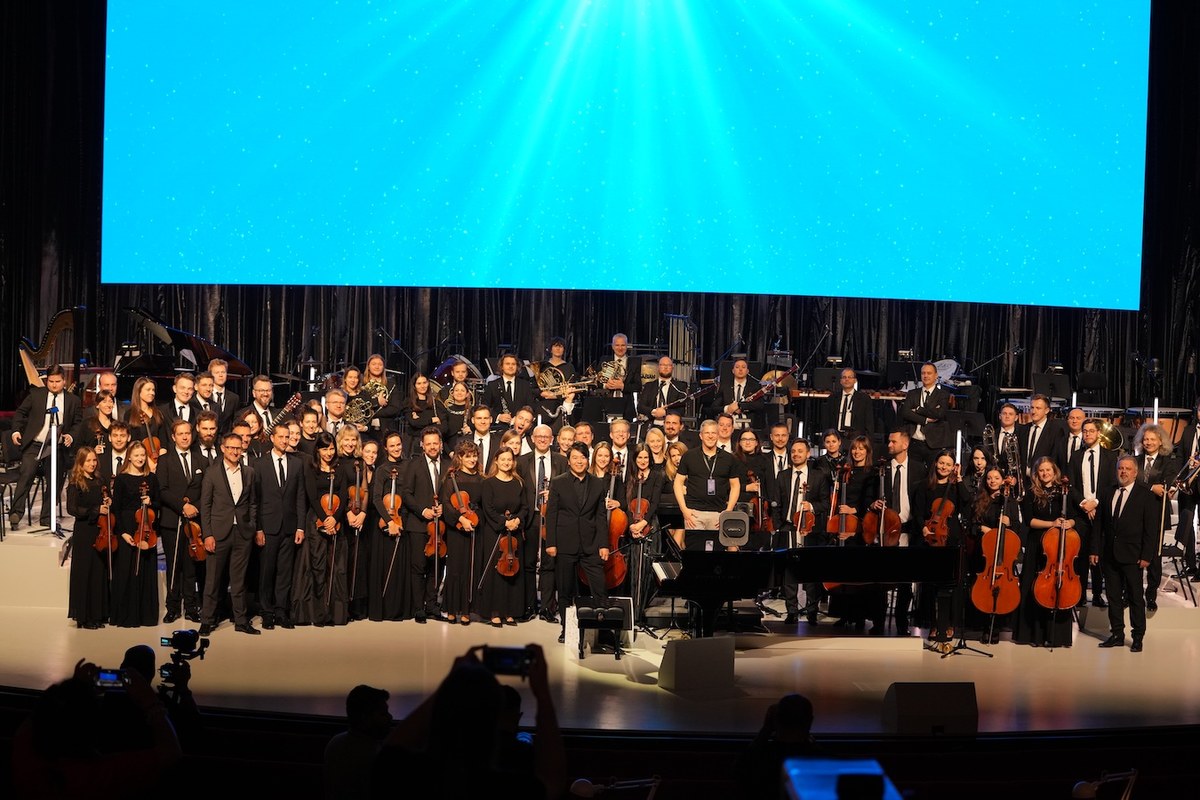DHAHRAN: On Dec. 7, one of the world’s most acclaimed pianists, the Chinese maestro Lang Lang — along with some ‘friends’ — brought his “Lang Lang plays Disney” show to Ithra in Dhahran, in which he rearranges some of the animation company’s iconic songs to breath new life into old classics.
It was Lang Lang’s only regional performance of the show, Noura Al-Zamil, manager of programs at Ithra, pointed out.
“This unrivalled musical and visual experience is a celebration of 100 years of Disney and the immense impact the power of film music can have all over the world,” she said. Lang Lang echoed her words, telling Arab News that Disney songs were the perfect vehicle to unite people of all ages and backgrounds.
“The great thing about Disney movies is that you can be anywhere but you feel how similar we all are,” he said.
For his show at the 850-seat Ithra Theater, Lang Lang was accompanied by the Beethoven Academy Orchestra — a youth orchestra from Poland, established two decades ago. They were conducted by the world-renowned Edwin Outwater, who, like Lang Lang, is known for imaginatively merging genres. On the screen at the back, each Disney song was accompanied by visuals from the relevant film or short.
As Lang Lang seamlessly transitioned between songs, he introduced several guest performers; some were long-term collaborators, others he had never played with in front of an audience before.
Saudi Arabia’s own Loulwa Al-Sharif was one of the latter. The jubilant songstress brought her distinct jazz flair to an iridescent rendition of “It’s All Right” from 2020’s Oscar-winning “Soul.”

Lang Lang and his wife Gina Alice Redlinger performing together in Germany in 2021. (AFP)
His other guests included Brazilian guitarist Plinio Fernandes; Pablo Garcia-Lopez, whose angelic voice turned “You’ll be in my Heart” from “Tarzan” (1999) into an Italian opera track; and Guo Gan, the erhu master (the erhu is a two-stringed bowed instrument which resembles a fiddle). Gan and Lang Lang have been friends for many years — their fathers actually used to perform together — and that was immediately apparent in their onstage chemistry.
But perhaps the guest who most excited Lang Lang was his wife, Gina Alice Redlinger, an accomplished pianist and vocalist in her own right, who was met with rapturous applause from the audience.
Lang Lang accompanied his wife on the piano as she sung “When You Wish Upon A Star” from “Pinocchio.” Their young son was unable to join them on their trip, but Lang Lang made sure to perform some of his favorite tunes throughout a magical night.
This was Lang Lang’s second visit to the Kingdom — which he described as “really blossoming in many aspects” — and the pianist said he has long been fascinated by music from the Arab world, having visited Egypt and the UAE, as well as Saudi Arabia.

The Beethoven Academy Orchestra at Ithra. (Supplied)
“I personally really love Arabic music because your music is very exotic; it’s very tasteful. Arabic music is similar to that of the west part of China,” he said, adding that perhaps the two areas had influenced each other culturally via the ancient Silk Road.
He has also ensured that his legacy in the Kingdom goes beyond live performances. Having selected a number of young local music students to watch him rehearse for the show, he then offered two of them a masterclass. Each youngster performed a short piece on piano, after which Lang Lang offered praise and practical tips. He was patient and playful throughout — a combination that will be familiar to viewers of this year’s UK reality show “The Piano,” for which Lang Lang was one of the judges.
Meeting with — and offering advice to — aspiring musicians is something that Lang Lang tries to do wherever he performs.
“I have been working very hard with the schools from around the world to rebuild their music classes — to review their music education, I think it's quite important,” he said. “And I hope in the future we can do some fun visits and work with Saudi to maybe learn Arabic music.”
























